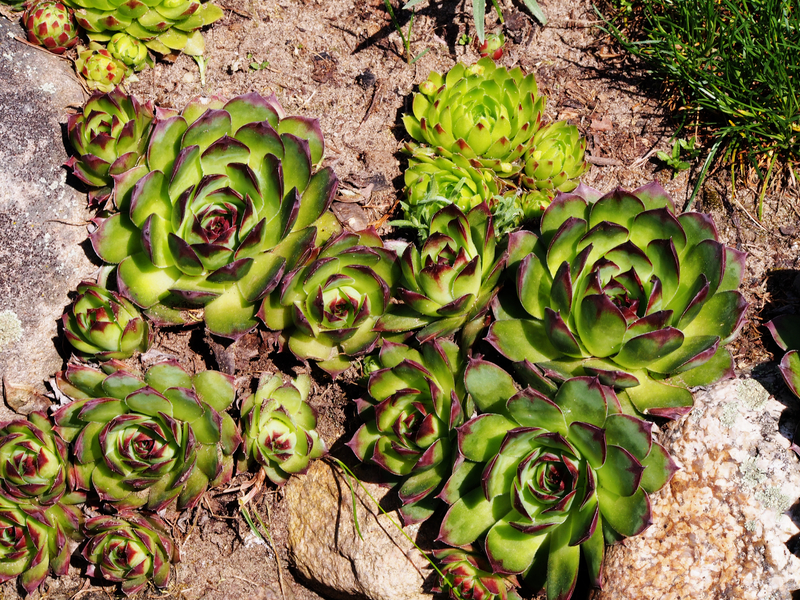Urban oasis: Vertical gardening in concrete jungles
Posted on 10/09/2025
Urban Oasis: Vertical Gardening in Concrete Jungles
In the face of rapid urbanization and limited green spaces, vertical gardening emerges as a transformative solution, turning lifeless concrete jungles into lush, thriving urban oases.
What Is Vertical Gardening?
Vertical gardening, sometimes known as living walls or green walls, is a method of growing plants upward rather than outward. Instead of sprawling over the ground, plants are cultivated using trellises, stacked containers, wall-mounted pockets, or hydroponic panels, making it possible to create urban gardens in unexpected places--even on the sides of buildings!
Why Are Urban Oases Important?
As cities expand and natural environments shrink, the need for greener, healthier living spaces becomes ever more pressing. Urban oases--areas filled with greenery and nature in the middle of cities--offer numerous benefits, including:
- Improved air quality
- Reduced urban heat island effect
- Enhanced mental well-being and stress relief
- Increase in biodiversity
- Aesthetic improvement of cityscapes
Vertical gardens make these benefits accessible, even where space is at a premium.
The Rise of Vertical Gardens in Concrete Jungles
The term concrete jungle often describes cities marked by endless skyscrapers, pavement, and little natural life. As populations soar and buildings rise, the conventional concept of gardening faces serious challenges. Enter vertical gardening--a practice that reclaims urban spaces for nature lovers and city dwellers alike, transforming offices, apartments, and public walls into vibrant green sanctuaries.

Key Benefits of Vertical Gardening in Urban Spaces
1. Maximizing Space
- Space Efficiency: In crowded cities, ground space is often unavailable for traditional gardens. Vertical gardens grow upward, utilizing walls and other vertical surfaces that would otherwise go unused.
2. Improved Air Quality
- Natural Air Filters: Plants absorb carbon dioxide and pollutants, releasing oxygen and helping to purify city air. This can significantly reduce airborne toxins and dust.
3. Urban Cooling
- Temperature Regulation: Vertical gardening reduces the urban heat island effect by shading buildings and cooling the surrounding air through evapotranspiration.
4. Enhanced Well-Being
- Mental Health Benefits: Studies show exposure to green spaces decreases stress, boosts mood, and improves focus--right where people live and work.
5. Biodiversity and Ecosystem Support
- Wildlife Habitat: Urban vertical gardens attract beneficial insects, birds, and pollinators, restoring a fragment of local ecosystems in the heart of the city.
6. Fresh Produce and Food Security
- Urban Farming: Edible vertical gardens supply residents with fresh herbs, vegetables, and even fruits, supporting sustainable urban food systems.
Choosing the Right Vertical Gardening System
Not all vertical garden systems are the same. The best choice depends on available space, budget, maintenance preferences, and desired crops. Here are popular options:
- Living Wall Panels: Modular panels filled with soil or hydroponic media, suitable for both indoor and outdoor use. Highly customizable in size and design.
- Pocket Planters: Fabric or plastic pockets hung on walls, ideal for herbs, flowers, and small leafy vegetables.
- Trellises and Climbing Supports: Perfect for vining crops such as tomatoes, beans, or ornamental ivy.
- Stacked Containers and Vertical Towers: Freestanding units that allow multiple layers of plants.
- Pallet Gardens: Recycled wooden pallets create a rustic, eco-friendly vertical garden with minimal investment.
How to Start Your Urban Vertical Garden
Ready to create your own urban oasis? Follow these practical steps for successful vertical gardening in concrete cities:
1. Assess Your Space
- Find a suitable wall, balcony, or fence. Consider sunlight, shade, and exposure to wind--choose a sheltered but bright location if possible.
- Measure your available vertical area before choosing the system and plants.
2. Select the Right System
- Decide between DIY solutions (such as pallets or homemade planters) and commercial modular systems, based on your skills and budget.
3. Choose Your Plants
- Light: Match plant selection to the available sunlight. Leafy greens and most herbs thrive in partial shade; succulents, tomatoes, or peppers need full sun.
- Water Needs: Group plants with similar irrigation requirements together.
- Space Consideration: Opt for compact or vining species that benefit from vertical support.
4. Prepare Your Structure
- Securely mount the system to a stable wall. Use proper hardware to accommodate the weight of wet soil and mature plants.
- If indoors, protect walls from water or soil leaks by installing a waterproof membrane or tray at the base.
5. Soil and Watering System
- Select a high-quality, lightweight potting mix for best drainage and root development.
- Consider integrated drip irrigation or self-watering units for easier upkeep, especially in larger vertical gardens.
6. Plant and Maintain
- Gently transplant seedlings or sow seeds directly.
- Regularly prune, fertilize, and check for pests and diseases to keep your vertical urban oasis lush and productive.
Best Plants for Urban Vertical Gardens
Herbs and Edibles
- Basil
- Mint
- Oregano
- Thyme
- Lettuce
- Spinach
- Strawberries
- Cherry tomatoes
Ornamentals and Air-Purifying Plants
- Pothos
- Philodendron
- Spider plant
- Ferns
- Succulents
- English ivy
- Bromeliads
These species adapt well to vertical growth and varying light, making them perfect for greening concrete city spaces.
Creative Examples of Urban Vertical Gardens
- High-Rise Living Walls: Major cities like Singapore and Milan boast residential towers enveloped in vertical gardens, cooling buildings and improving city aesthetics.
- Community Vertical Farms: In cities like New York or London, neighborhood groups transform unused walls or fences into productive vegetable and herb gardens, fostering a sense of community.
- Balcony and Rooftop Oases: Residents in small apartments create stunning green walls on balconies or rooftops, providing privacy and serenity.
- Corporate Office Greenspaces: Businesses integrate living walls into office interiors and facades, offering staff improved air quality and psychological relief.
Challenges of Vertical Gardening in Cities
Despite its many rewards, vertical gardening in concrete settings comes with unique hurdles:
- Weight and Structural Load: Walls must safely bear the weight of plants, soil, and water.
- Water Management Issues: Overwatering may lead to wall or floor damage, while underwatering stresses plants.
- Sunlight Limitations: Tall neighboring buildings can cast deep shade, restricting plant choices.
- Urban Pollution: Soot, dust, and emissions may affect plant health and increase cleaning needs.
- Upfront Costs: High-quality systems and installation can be costly, though many DIY options exist.
Tips for a Thriving Urban Oasis with Vertical Gardening
- Start Small: Begin with a single modular panel or a row of hanging planters to master care and maintenance.
- Choose Resilient Plants: Opt for drought-tolerant and pest-resistant varieties suited for urban conditions.
- Monitor Water Needs: Check soil moisture frequently. Automatic or drip irrigation systems may save time.
- Fertilize Regularly: Container-grown plants require more frequent feeding due to limited soil.
- Rotate Plants: Swap out underperforming species or rotate edible crops through the seasons.
- Join a Community: Connect with local gardening groups for shared learning and support.
- Enjoy the Process: Even small vertical gardens can transform your home or office into a rejuvenating urban oasis.

The Future of Urban Greening: Beyond Concrete Jungles
As urban populations continue to grow, the importance of reintroducing nature into city landscapes cannot be overstated. Forward-thinking architects, city planners, and community activists are championing urban greening strategies, with vertical gardening at the forefront. Smart cities are integrating living walls, green facades, and rooftop farms into existing and new developments, ushering in a future where cities and nature coexist harmoniously.
In the coming years, innovations in lightweight materials, hydroponics, and automated systems will make vertical gardens more accessible, sustainable, and impactful. Whether you're a city dweller with minimal space or a business seeking environmental leadership, embracing vertical gardening can cultivate not only plants but also community, health, and hope within the heart of the metropolis.
Conclusion: Transforming Concrete Jungles into Urban Oases
Vertical gardening holds the potential to revolutionize urban living, offering a simple yet profound way to create urban oases in concrete jungle cities. By maximizing limited space and harnessing the power of plants, any wall, balcony, or rooftop can become a sanctuary of beauty and sustainability, improving both personal quality of life and collective urban resilience. With creativity and commitment, every city dweller can take steps toward a greener, healthier world--one vertical garden at a time.
Ready to grow your own urban oasis? Start your journey today and transform your concrete jungle into a lush vertical garden paradise!

